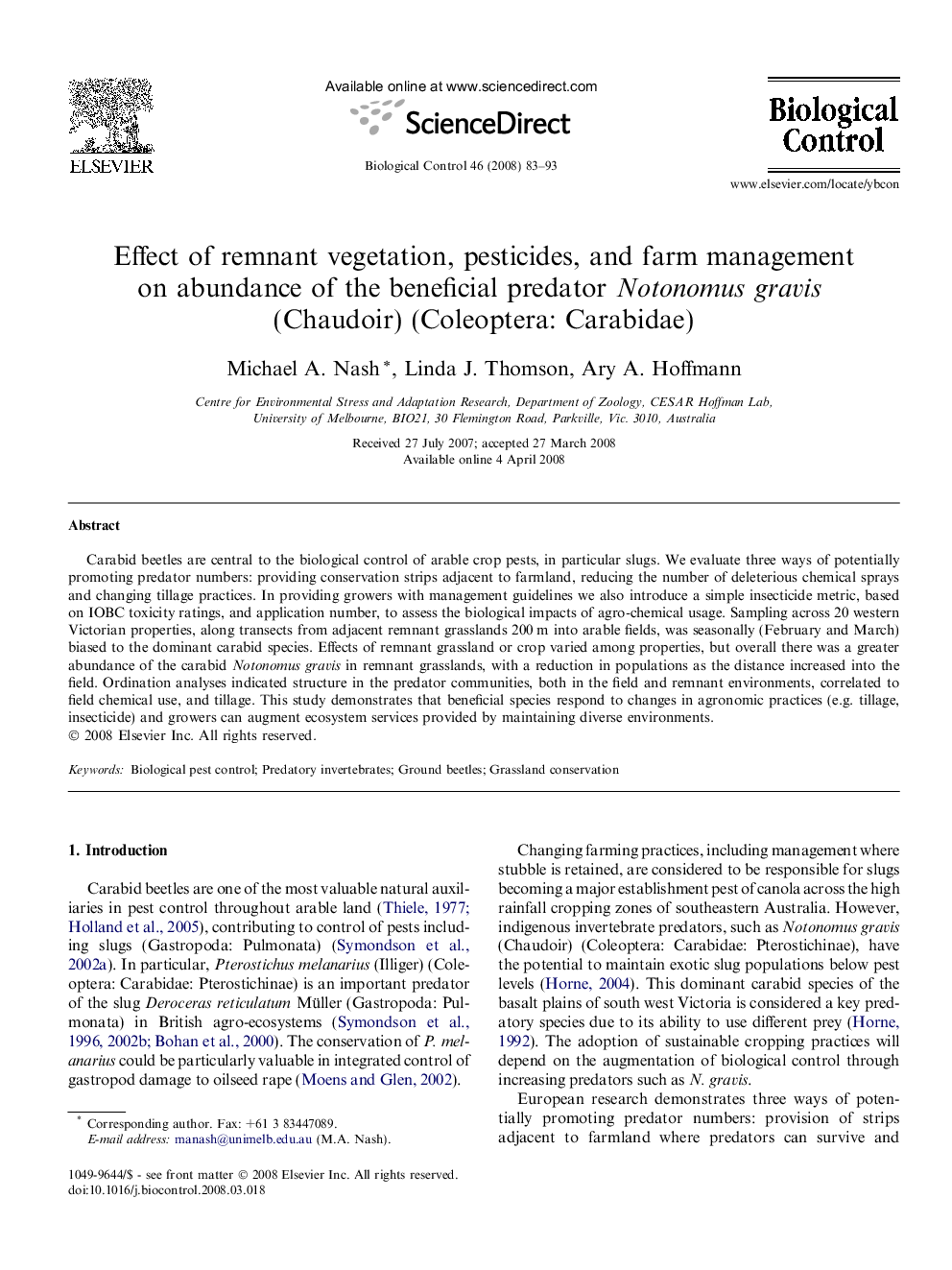| Article ID | Journal | Published Year | Pages | File Type |
|---|---|---|---|---|
| 4504932 | Biological Control | 2008 | 11 Pages |
Carabid beetles are central to the biological control of arable crop pests, in particular slugs. We evaluate three ways of potentially promoting predator numbers: providing conservation strips adjacent to farmland, reducing the number of deleterious chemical sprays and changing tillage practices. In providing growers with management guidelines we also introduce a simple insecticide metric, based on IOBC toxicity ratings, and application number, to assess the biological impacts of agro-chemical usage. Sampling across 20 western Victorian properties, along transects from adjacent remnant grasslands 200 m into arable fields, was seasonally (February and March) biased to the dominant carabid species. Effects of remnant grassland or crop varied among properties, but overall there was a greater abundance of the carabid Notonomus gravis in remnant grasslands, with a reduction in populations as the distance increased into the field. Ordination analyses indicated structure in the predator communities, both in the field and remnant environments, correlated to field chemical use, and tillage. This study demonstrates that beneficial species respond to changes in agronomic practices (e.g. tillage, insecticide) and growers can augment ecosystem services provided by maintaining diverse environments.
